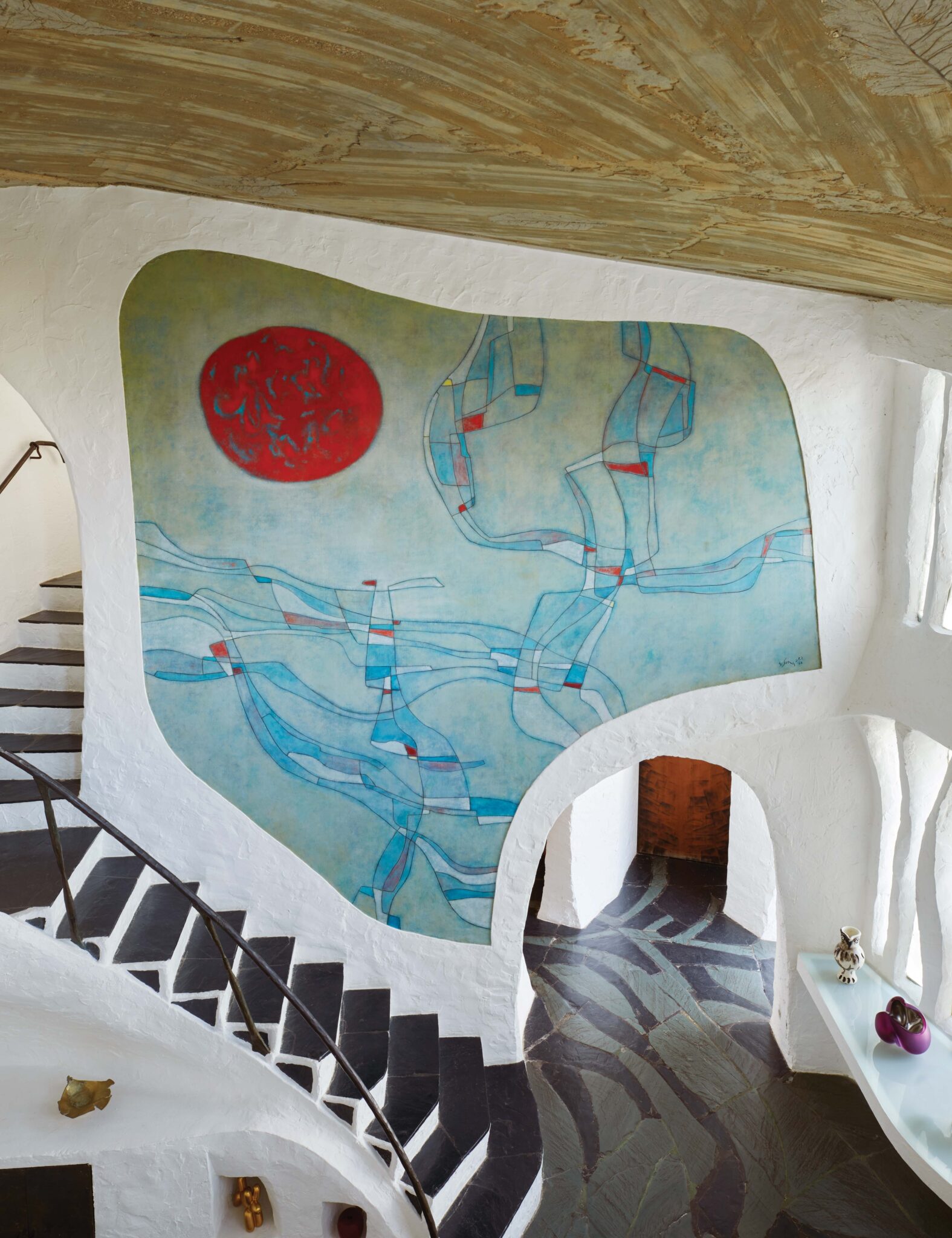
Long downplayed as a domestic craft without the creative value or relevance of fine art, the medium of weaving can actually be a highly unique and powerful vehicle for expression. These ten trailblazing women of the 20th century took to the loom to put their genius and vision on full display.

Barbro Nilsson

In 1941, while she was heading up the textile department at Konstfack, Sweden’s premier design school, Nilsson was tapped as artistic director of the legendary Båstad hand-looming workshop. For the next 30 years there, she showcased her technical ingenuity and indelible sense of color. To this day her rugs remain avidly collected and highly prized. 
Lenore Tawney

Fiber artist Lenore Tawney poses for a portrait in her studio at 27 Coenties Slip in 1958 in New York City.David Attie/Getty Images
Part of the Abstract Expressionist movement of the 1960s, the Manhattan-based Tawney’s extraordinary woven pieces helped launch the contemporary field of fiber arts. Her early gauzy tapestries juxtaposed techniques and yarns to create loose, painterly designs. Later in her career, she pushed weaving into the realm of three-dimensional sculpture.

Three Angels, Lenore Tawney, 1954Art Institute of Chicago/Art Resource, Inc.
Otti Berger

Born in what is now Croatia, Berger joined the Bauhaus in 1926, studying under Gunta Stölzl and Paul Klee, and was soon recognized as one it its star weavers. She patented several of her inventive methods and established her own flourishing studio. Being Jewish, the Nazis forced her to shut down her business, and she died at Auschwitz at the age of 46.

Eileen Gray

Portrait of Irish archictect Eileen Gray (born Katherine Eileen Moray Smith, 1878 – 1976), 1926.Berenice Abbott/Getty Images
An acknowledged pioneer of 20th-century architecture and furniture design, Gray also had a thriving rug practice at her atelier, employing up to eight weavers at a time to execute her vision. The rugs’ saturated hues hark back to Gray’s intense early passion for lacquerwork. Their geometric patterns reflect her penchant for modernism’s clean lines.

Paule Leleu

Born into the family that founded Maison Leleu, one of the juggernauts of 20th-century French design, Leleu created avant-garde rugs that embraced the bold, symmetrical patterning and rich colorations of what was then the still very nascent Art Deco style. Circular compositions that felt at once opulent and fresh were one of her signatures.

Marion Dorn

The California-born multihyphenate Dorn was known for her modern takes on classical motifs, and worked in textiles, wallpapers and rugs. She shot to prominence in 1926, when Vogue featured her handmade batiks and prints. Avid clients and fans of her rugs included Syrie Maugham, the Waldorf Astoria, Cunard, Claridge’s and the White House.

Marianne Richter

Originally a student of Barbro Nilsson, Richter when on to work for her at the influential workshop Båstad, mastering everything from flatweaves to long-piles. Celebrated for her lyrical colors, she also orchestrated production of the enormous hand-loomed piece gifted to the United Nations by the Swedish government in the 1950s, at the time the world’s largest tapestry.

Sonia Delaunay

Sonia Delaunay in the Delaunays’ apartment, Boulevard Malesherbes, Paris, 1924. Private Collection.Fine Art Images/Heritage Images/Getty Images
Primarily known for her paintings, the multidisciplinary Delaunay explored a wide range of outlets, from textiles to stage sets. Her work was filled with bold colors and abstract forms, a hallmark of Orphism, the movement she cofounded with her husband, artist Robert Delaunay. In 1964, she became the first living female artist to have a retrospective at the Louvre.

Judith Johansson

Recognized as one of the geniuses of 20th-century weaving, Johansson hailed from a rural part of Sweden steeped in textile traditions. She founded her own atelier by the time she turned 30, and is credited with resuscitating the handmade production of Scandinavian flatweave rugs. Her work is known for nature-inspired patterns and geometric abstractions.

Gunta Stölzl

As the only female master of the Bauhaus, the German-born Stölzl transformed the school’s drowsy weaving department into one of its most exciting, mentoring students such as Anni Albers along the way. After the Bauhaus dissolved, Stölzl founded her own successful weaving business. Her work is held by such major institutions as MoMA and the V&A.

PRODUCED BY ALLISON SHAW


















